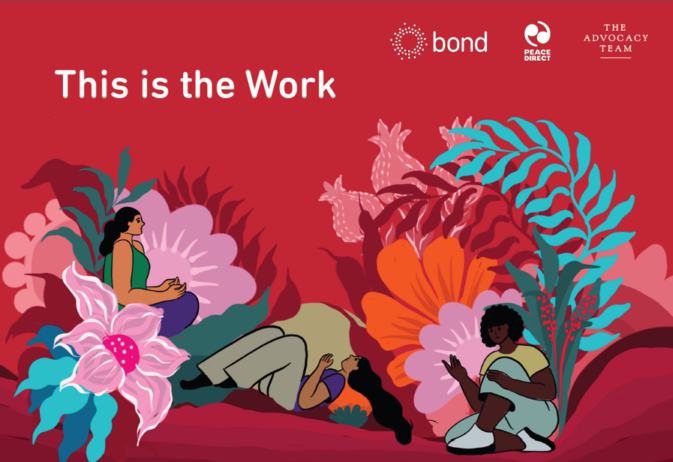UK aid in 2022: The point of no return?
Yesterday, the Foreign, Commonwealth and Development Office (FCDO) published its Statistics on International Development: Final UK Aid Spend 2022.
These tell us how the UK government’s Official Development Assistance (ODA/UK aid) was spent in 2022. Here’s what we learnt.
Overall ODA budget increased
In 2022, the UK spent 0.51% of GNI on ODA, a total of £12.8billion, and an increase of £1.4billion compared to 2021. However, the dramatic increase in UK aid supporting refugees in the UK – to £3.7 billion – in 2022 means that in reality aid spending in low- and middle-income countries fell by £1.3 billion. If the government had met the commitment to spend a minimum of 0.7% GNI on ODA, the total budget would have been £ 4.7 billion larger, at £17.5 billion.
As a result of these trends, which have stretched the ODA budget to breaking point, something had to give and the statistics tell a story of three big reductions. Spend in Africa, to low-income countries and through the FCDO have all hit major lows this year. As a result, the fundamentals of good development spending appear to have lost out.
Home Office the new big player
The FCDO spent just 59.7% of all ODA in 2022, the first time the amount spent by the primary development department has dropped below 70% since at least 2007/8, the furthest back these statistics look. This was to make space for more spend through the Home Office, which at 18.7% of total ODA saw an increase of 130% in its budget compared to 2021. Looking further back, aid spending by the Home Office has increased from just £446 million in 2019 to an incredible £2.4 billion in 2022.
The majority of the Home Office spend, as well as that of some other departments, has funded our support to refugees and asylum-seekers in the UK. This is now the top ODA-receiving sector, with 38.9% of bilateral ODA going to cover our domestic responsibilities, a total of £3.7bn. This is an increase of 251% compared to 2021.
To make room for this increased support to refugees in the UK in the ODA budget, other sectors have lost out. Spending on education has been reduced by 25% compared to 2021 and spending on water supply and sanitation decreased by 41%. Although UK humanitarian aid increased modestly in 2022 – to just over £1 billion – it remains 28% smaller than the £ 1.5 billion spent in 2020 and less than a third of the amount spent on refugee costs. The UK must provide adequate support to refugees and asylum-seekers in the UK, but this should not be at the expense of those living in poverty around the world.
Further reductions in African and low-income countries
The second huge shift is in bilateral spending to countries in Africa. Across all departments, the total share going to Africa is just 42.2% of bilateral ODA. This is the first time it has dropped below 50% since these statistics were first published. Compared to 2021, countries in Africa received £486 million less. While this is a smaller cut than in recent years, it still represents a decision to deprioritise Africa even as the ODA budget increased. Spending in Europe, meanwhile, has increased by 194% compared to 2021, totalling £452 million in 2022. The recently published FCDO budget suggests that UK aid spending in Africa will fall again in 2023/24, before rising significantly in 2024/25.
Across countries, Ukraine received the second-highest amount of UK ODA, with £342 million going to support the country in 2022. Afghanistan received the most UK ODA for the second year running, with spending increasing by 88% to £352 million. Sudan was no longer in the top 20 ODA recipients, receiving 68% less ODA than in 2021. Other notable changes include reductions of 36% to DRC and 25% to Ethiopia.
When we look at spending across country income status, the story is equally bleak. Total ODA to least developed countries (LDCs) was just 51% of ODA in 2022 (£1.2bn). This is the lowest percentage going to LDCs since 2016. In terms of absolute spending, the amount going to LDCs dropped by £ 182 million between 2021 and 2022 and is £1.1 billion lower than in 2020.
What next?
We knew that 2022 was going to be a tough year for UK aid. The dramatic increases in spending in the UK have been highly publicised, and those watching UK development trends have long been highlighting that there wasn’t enough money to cover everything.
These statistics confirm these fears. Once again, those most in need are losing out. This results from years of cuts, reductions and diversions of UK ODA – spending through the FCDO, to countries in Africa and to LDCs all being cut to levels not seen for years. It is disheartening and feels like the UK is turning back the clock on years of good development practice.
But there’s another story being told in these statistics. The money is there, and when the government chooses to prioritise something, it can be protected. The choice to use the ODA budget for the Home Office’s costs demonstrates this, and so does the increased spending for Ukraine.
The government can tell a happier story in 2023. Their recent reintroduction of a poverty-based ODA allocation model and actions to reign in non-FCDO spending suggest they may be doing just this. However, with additional cuts to UK aid spending across Africa planned in 2023/24, and increases delayed until 2024/25, the picture remains bleak. This is a political choice, and it remains to be seen whether the government will choose a different path in 2023.
Category
News & ViewsThemes
UK aid



